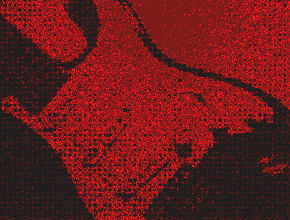I just went to the International Society for Metal Music Studies biennial conference in Victoria, BC, June 9-12. The conference was titled “Boundaries and Ties: The Place of Metal Music in Communities”. Like my last conference paper, I thought I would post my abstract here, so it’s at the bottom of this post.

Coming soon, keep an eye out for a conference report I’m writing that will be published in an upcoming issue of the journal of Metal Music Studies! I will post that when it is available.
What a beautiful island Victoria is! Covered in forests. The campus was great, with lots of open space and plants everywhere, and a beautiful fountain with birds. Plus it was nearly deserted because of summer vacation, which made a great atmosphere for the contemplation of all things metal.
And they even have a dentist and a bar on campus! How civilized! The weather was very civilized, too.
The conference included a concert by the Victoria-born, Vancouver-based band Unleash The Archers, as well as a keynote talk by their lead singer Brittney Slayes. Check them out if you don’t know them, they’re great! Melodic death metal with a modern sound that has echoes of old power metal and new stuff like Tesseract.
As promised, here is the title and abstract of my paper.
Title:
“We take everything to an extreme”: Genre, Performativity, and Aspirational Trajectories of Style
Abstract:
Genre is sometimes determined more by social roles and ideology than it is by textual norms, an argument illustrated by the American band Metallica, who arguably catalyzed the development of extreme metal (EM) from earlier, more melodic styles. Genre is frequently modeled as a synchronic set of style rules or signifiers, forming a horizon of expectations based on the style norms of a corpus of existing texts. Historians paradoxically describe Metallica as simultaneously defining the loud thrash metal style and deviating from those codes with songs like “Fade to Black,” which uses softer singing and guitar playing in addition to other quiet features. The specific combinations of lyrical topics and quiet musical features used in Metallica’s melodic songs were common among their contemporaries and immediate predecessors. Accordingly, I re-theorize the early extreme metal genre not as a stable set of style norms, but a hermeneutic moment in which the emerging EM scene expected that norms would be exceeded. Throughout the 1980s and subsequent years, this expectation guided the creation and reception of increasingly heavier styles, an aspirational trajectory without a fixed endpoint.
Recent theories of genre emphasize that each musical statement, genre classification, or moment of interpretation that participates in a genre also performatively reshapes that genre. I extend this work by appealing to performance studies scholarship to theorize how, within these actions constituting the EM genre, fans and musicians place themselves and others within a scenario of two roles: either an insider who desires heaviness, or an outsider who rejects heaviness. While Metallica’s melodic songs participated in existing metal style codes, and were affectively powerful on these terms, these songs “betrayed” the EM scene by not advancing along the aspirational trajectory towards heaviness that constitutes genre in early extreme metal. I show how the roles and scenarios of music scenes can be integrated into text-oriented hermeneutics, and argue that this integration is necessary for models of genre to account for meaning and classification during periods of style change.

